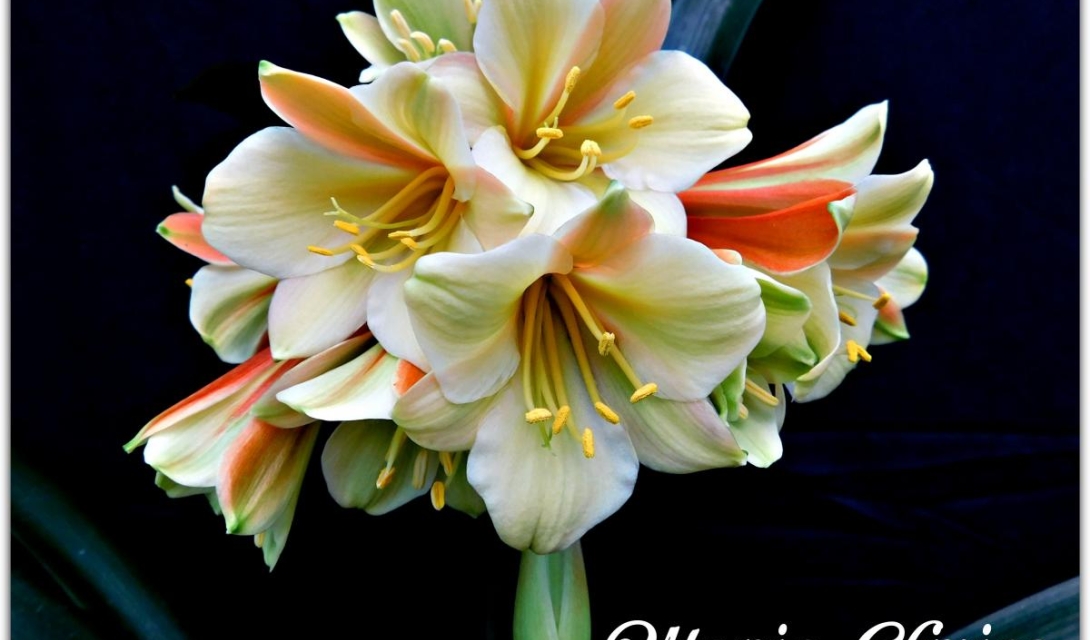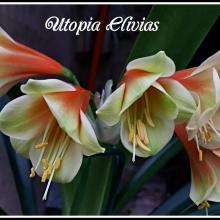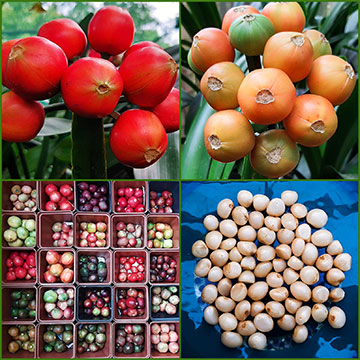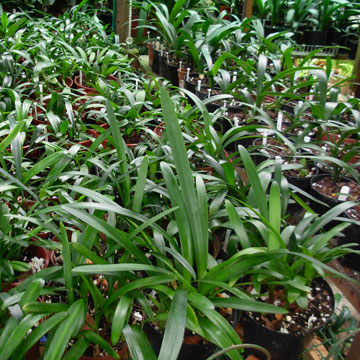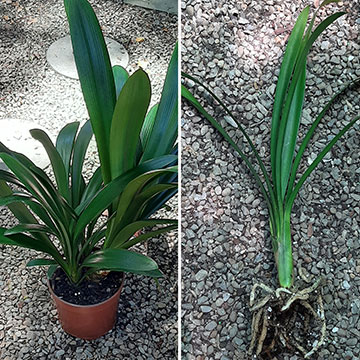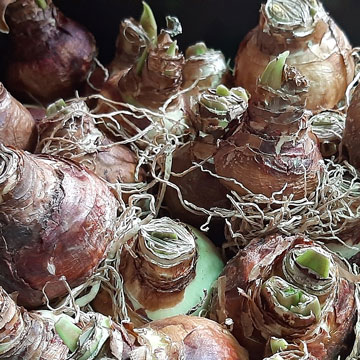Taking interspecific breeding a step further:
By Carrie Kruger Utopia Clivias
Interspecific flowering season is always a very exciting time for breeders. Nothing gives us more pleasure than seeing the start of a new flower forming on a cross that you made four to five years ago. From the moment a bud appears till the first flower opens, you are held in suspense to see if the result is what you had imagined it would be.
We all know that in clivia breeding there are good and bad results and then, there are those few that stand out from the rest where you just know you have hit the jackpot. These are the flowers that make the long wait worthwhile.
We consider interspecific breeding as the “new age” of clivia breeding. Most of the new and unusual colours in clivias originate from interspecific breeding. We believe that the future of clivia lie hidden in these genetics. The largest range of colours are found in interspecific flowers.
It has been proven that with interspecific breeding the second generation produces improved colours and flower shapes. Most of the F1 hybrids are narrow tubular flowers, sometimes with a slight flare as we have seen with robusta and caulescens breeding.
When we started breeding interspecifics many years ago, there were not many good interspecifics to choose from. These were mostly F1 crosses. We selected the ones we thought at that time were more superior regarding flower shape and colour. We now breed with our best F2`s making sibling crosses as well as doing self-pollinations.
Because of the large gene pool in a single interspecific plant, results are never guaranteed. Therefore, it is advisable to grow these crosses to flowering size and to then select the best. Unfortunately, we do not all have the space to be able to bring them all into flower.
Findings from our breeding over the past few years:
Ensure you breed with superior f1 or f2 plants from the start. This will save you a good few years compared to starting from scratch with any of the species.
We have bred some superior versi colours from non versi colour parents, for example”Ember Spirit” Versi colour traits are carried over in the pollen as well as pod parent plants.
If miniata pollen is used too many times in a cross, the flowers become inferior miniata like types.
We have also flowered self-pollinated F2`s that were by far superior to the parent plant. This is proof that self- pollination is a good option if you are unsure of what pollen to use on a specific flower, “Planet Earth”
Make sure your plants are compatible, by making sure you know which group your plant belongs to.
It is advisable to use compact plants as one of the parent plants to produce a shorter leaf, more compact interspecifics. We have used a yellow Daruma with great success. “Mirror Beauty” is a good example of this type of cross.
Crosses using either variegated or LOB type plants have resulted in beautiful plants. “Light of Africa” is an example of this type of cross.
Conclusion:
- Interspecific hybrids have become more popular in the last few years and most clubs now have Interspecific shows in July or August to showcase and promote the beauty of these hybrids.
- These hybrids give us a longer flowering period as they start flowering from early June all the way through to October in the Southern Hemisphere.
- Interspecifics often flower at odd times during the year which make them a welcome sight in a shade house with only foliage.
- Interspecifics are fast growing and more disease resistant than Clivia Miniata. They also multiply well. Some plants make offsets before they have even flowered.
- The range of colours and flower forms are unlimited.
These special plants should be in every breeder`s collection. We hope to see many of our new crosses flower in the future.
